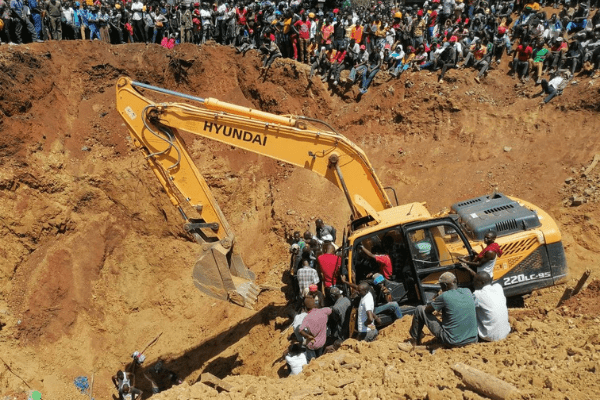A tragic incident was witnessed in Siaya County after a 36-year-old woman lost her life after a goldmine shaft collapsed.
The unfortunate event transpired in Ramba ‘A’ village, located in North Rama, Rarieda Sub County.
The mining company official promptly reported the incident to the Ndori Police Station. Preliminary investigations revealed that the collapse of the mining shaft occurred around 10:40 am on Thursday. Two women, identified as Roseline Adhiambo and Jane Akinyi, found themselves trapped under the debris.
Quick response from workers at the mining site led to the successful rescue of both individuals. Subsequently, Roseline Adhiambo and Jane Akinyi were rushed to Lwak Mission Hospital. Regrettably, Roseline Adhiambo was declared dead upon arrival at the medical facility.
“The incident at the site was reported at Ndori Police Station by an official at the mining company. The two were rushed to Lwak Mission Hospital where Roseline Adhiambo was pronounced dead on arrival,” police said.
The police diligently processed the accident scene, and the body of the deceased was conveyed to the same facility to await postmortem examination. This tragic incident highlights the inherent risks associated with mining activities and underscores the importance of stringent safety measures to protect workers in such environments.
WHAT RESULTS TO THE COLLAPSING OF A MINES?
Informal Mining Practices
Many mine collapses in Kenya occur in informal or artisanal mining operations where safety regulations may be lacking or not enforced effectively. These informal mines lack proper infrastructure and safety measures, increasing the risk of accidents.
Poor Infrastructure
Some mines in Kenya, particularly those in remote or rural areas, have inadequate infrastructure, including poorly constructed mine shafts and tunnels. These substandard structures are more prone to collapse, especially during heavy rains or seismic activity.
Lack of Regulation and Oversight
The mining sector in Kenya has faced criticism for weak regulation and oversight, which can contribute to unsafe working conditions and an increased risk of accidents. There may be insufficient inspections and monitoring of mining operations to ensure compliance with safety standards.
Geological Conditions
Geological factors such as unstable rock formations and soil composition can also contribute to mine collapses. Certain regions in Kenya are more prone to geological hazards, posing additional challenges for mining operations.
Human Factors
Human error, negligence, and inadequate training also play a role in mine collapses. Workers engage in unsafe practices or fail to recognize warning signs of potential hazards, increasing the likelihood of accidents.
Environmental Impact
Mining activities have significant environmental impacts, including land degradation and changes in hydrological systems, which contribute to goldmine collapses by destabilizing surrounding areas.
Strengthening regulations, improving enforcement of safety standards, providing training and education for miners, and promoting sustainable mining practices are essential steps to mitigate the risks and ensure the safety and well-being of those involved in the mining sector.

